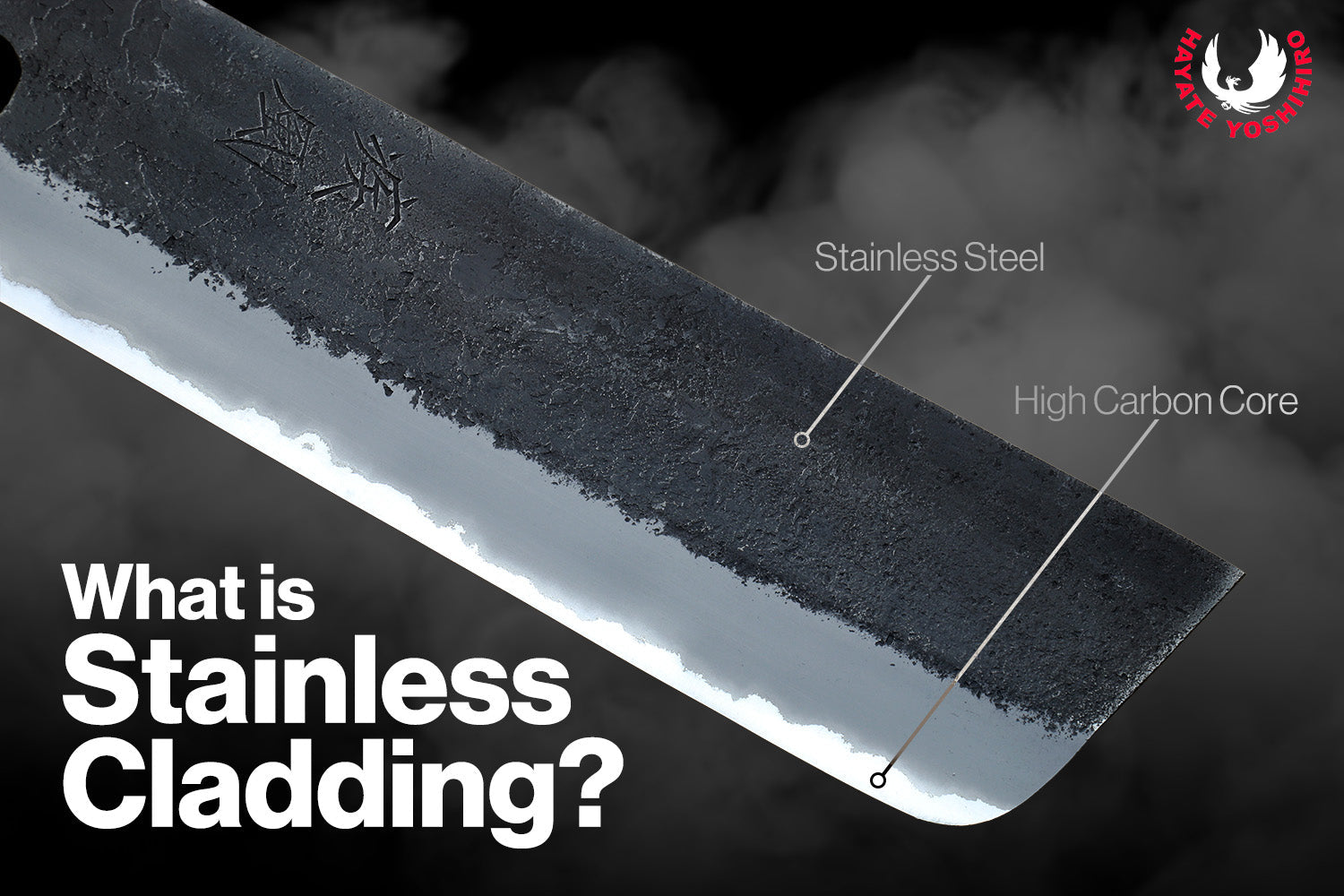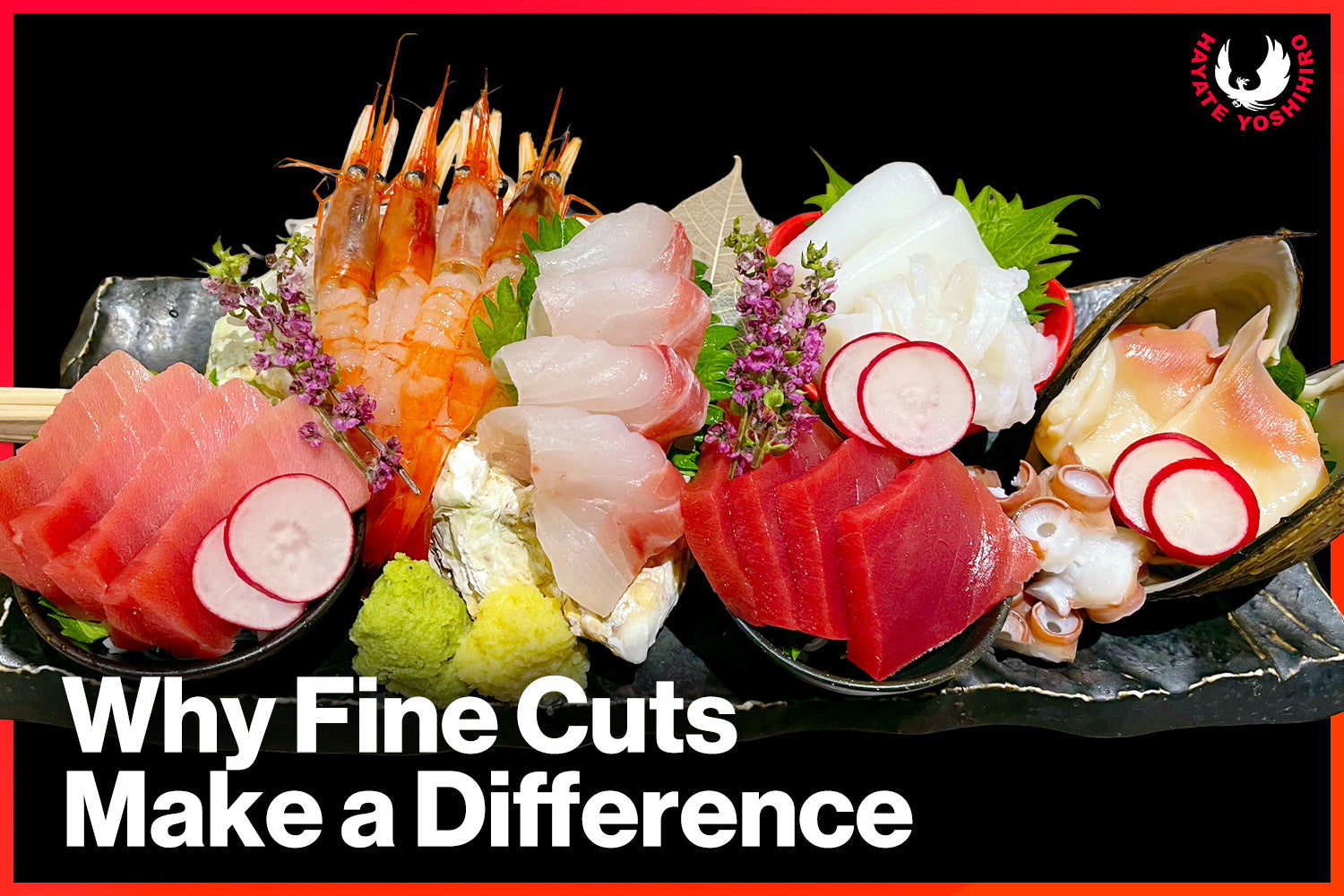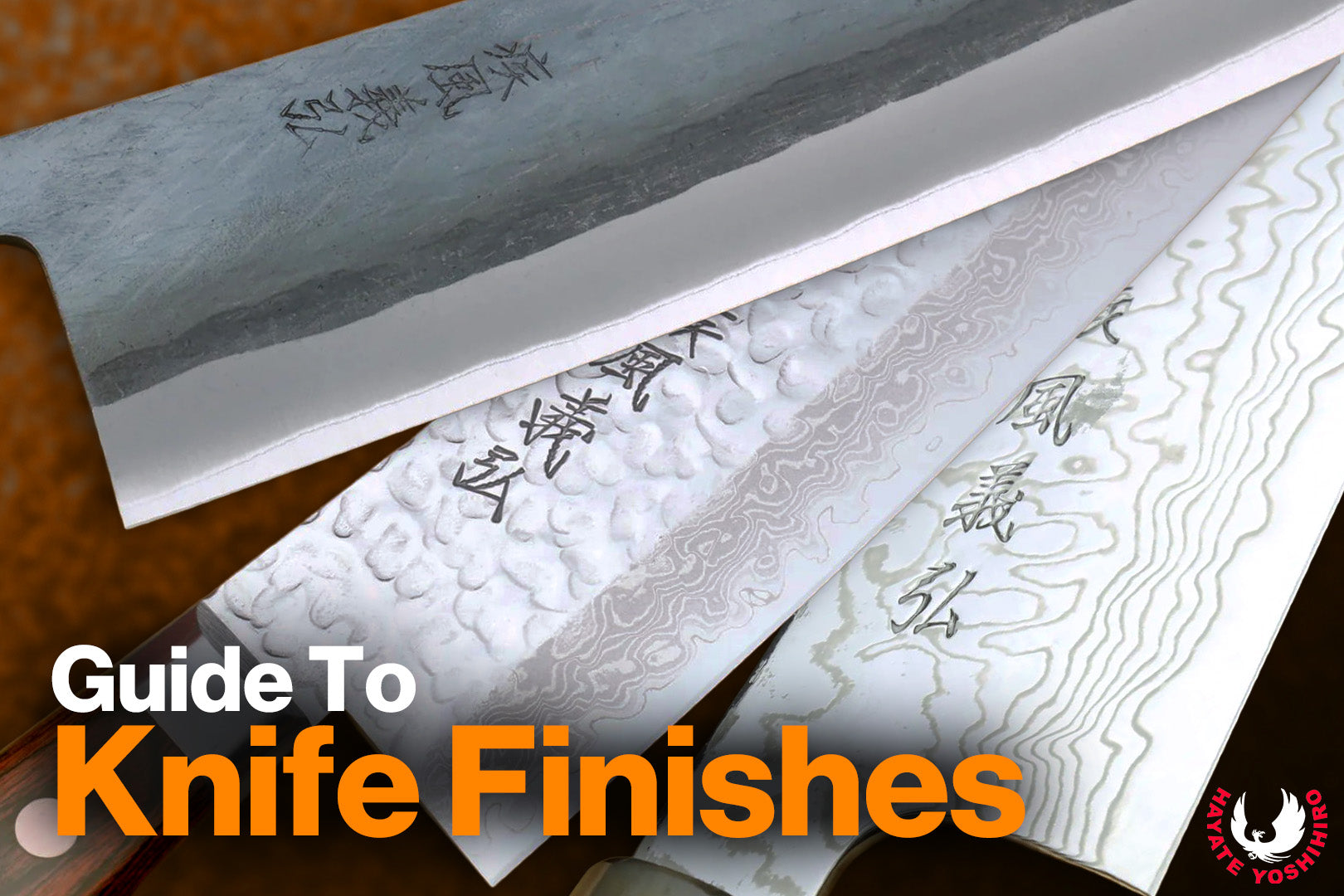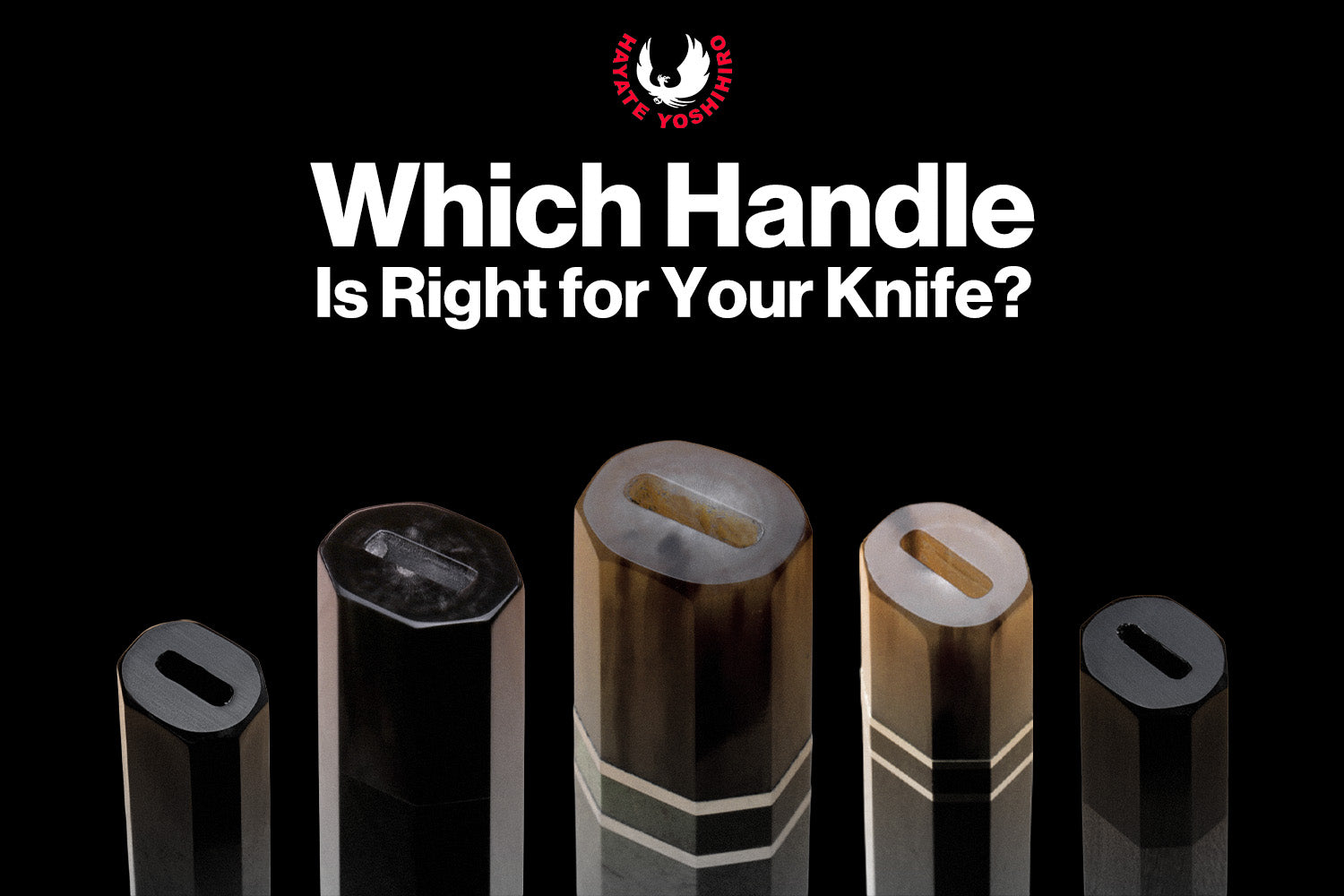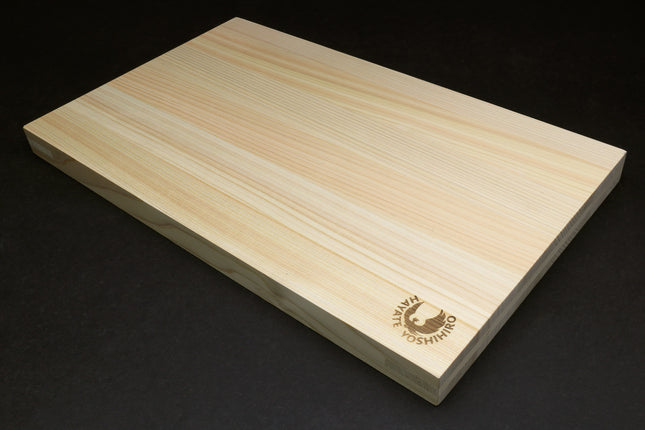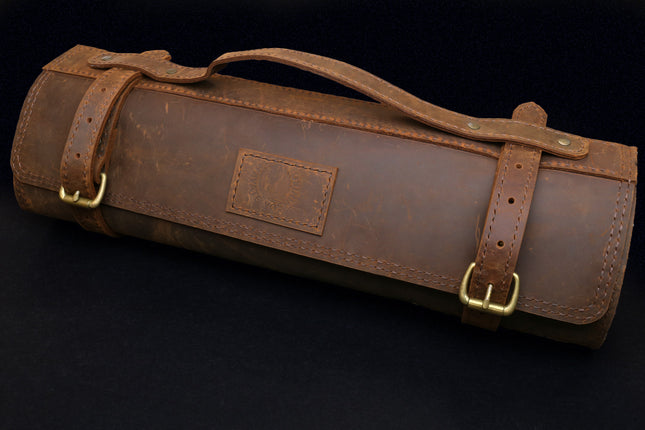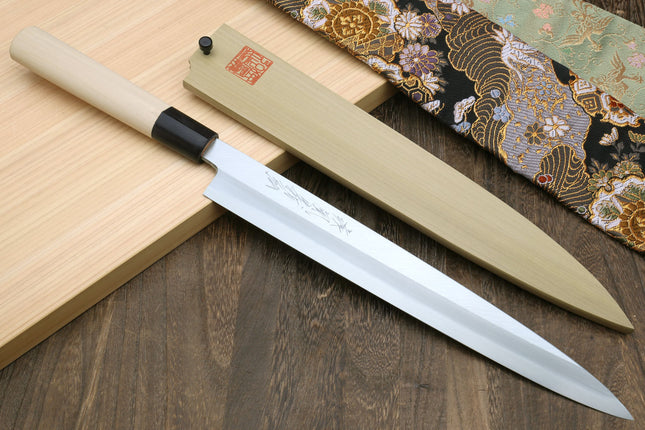What is Stainless Cladding?
- by Yoshihiro Cutlery
- 3 min reading time
Explaining the benefits of stainless-clad Japanese knives—sharpness of carbon steel with easier care and added rust resistance.

When researching high-quality Japanese kitchen knives, you may encounter the term stainless cladding. This knife-making technique is essential to understand when choosing a blade that offers both performance and practicality.
Stainless cladding on Japanese knives refers to the process of wrapping a hard, high-carbon steel core—known for its exceptional sharpness and edge retention—with layers of rust-resistant stainless steel. This construction is often called san-mai, meaning “three layers” in Japanese, with stainless steel on the outer layers and carbon steel at the center.
This hybrid design allows for the best of both worlds: the cutting precision and sharpening ease of carbon steel with the added durability and corrosion resistance of stainless steel. This method is especially popular among those seeking high performance without the upkeep of a fully carbon blade.
Used by skilled Japanese bladesmiths for generations, this method enhances durability while preserving the unique performance characteristics of traditional steels like White Steel and Blue Steel. Compared to fully carbon steel knives, stainless-clad Japanese knives are easier to care for. And compared to fully stainless knives, they often provide better cutting feel and edge retention.

Why Use Stainless Cladding in Japanese Knives?
Traditional Japanese knives frequently feature high-carbon steels such as White #1, Blue #2, or Super Blue as their core material. These steels are incredibly hard and capable of taking on a razor-sharp edge—but they’re also reactive and susceptible to rust if not maintained properly.
Stainless cladding provides a protective outer layer, shielding the majority of the blade from oxidation and staining. This makes the knife more practical for regular use in humid kitchens or fast-paced culinary environments. However, because the edge remains exposed carbon steel, the blade can still rust or form a patina if not properly cared for.

Benefits of Stainless Cladding
- High performance: The exposed carbon steel edge delivers superior sharpness and edge retention.
- Rust resistance: The stainless cladding helps reduce corrosion risk, making maintenance more manageable.
- Artisan aesthetics: Many stainless-clad knives feature a beautiful kasumi (mist-like) or kurouchi (black-forged) finish, showcasing the craftsmanship of Japanese bladesmiths.

How to Care for a Stainless-Clad Japanese Knife
Always wash your knife by hand using mild soap and water. Avoid dishwashers, as the heat and moisture can damage both the blade and handle. After washing, dry the knife immediately with a clean towel—don’t let moisture linger on the edge or cladding.
When working with acidic foods such as citrus or tomatoes, it’s best to wipe the blade periodically to prevent staining or corrosion. After use, store the knife in a dry location using a saya cover to protect the edge and minimize exposure to humidity.
Explore Stainless-Clad Knives from Yoshihiro Cutlery
At Yoshihiro, we offer a wide selection of stainless-clad Japanese knives, including our popular Kurouchi Black Forged Blue Steel series. These knives are perfect for home cooks and professionals alike who want exceptional cutting performance with a more forgiving maintenance routine.
It’s important to note that stainless-clad does not mean rust-proof. The exposed edge must still be treated with care—cleaned promptly, dried thoroughly, and stored properly. With proper care, a stainless-clad knife can deliver years of precision and beauty.
Learn more about caring for your knife in our Japanese Knife Care Guide.
Featured Products
Share information and details about this collection

